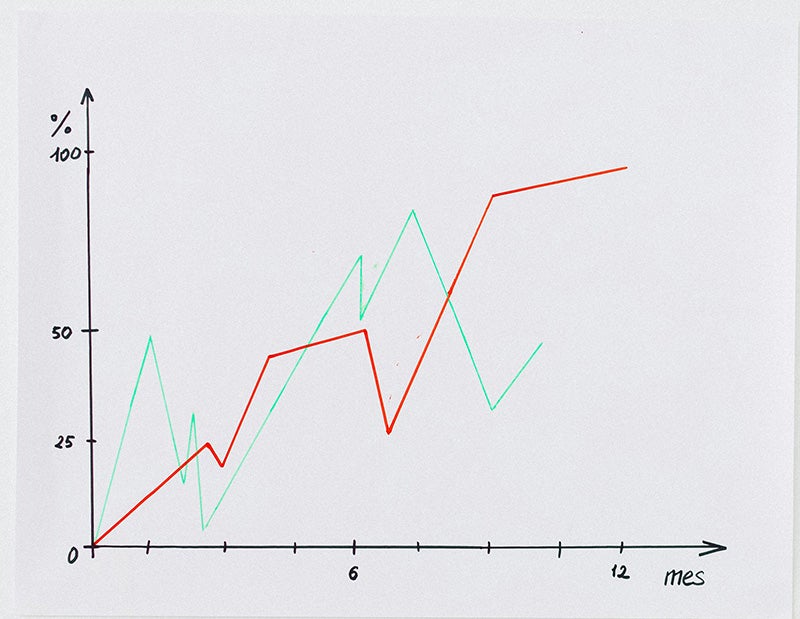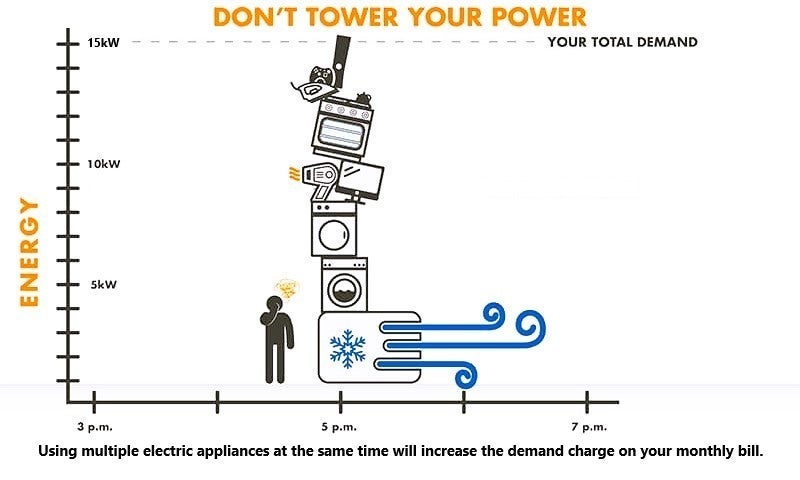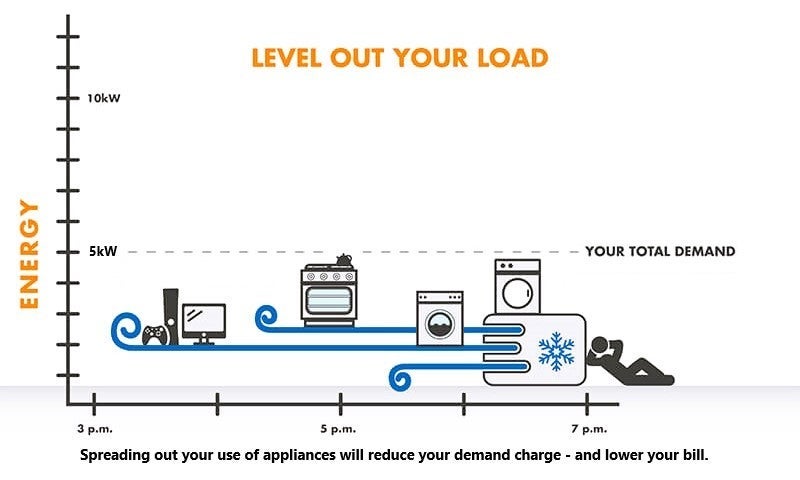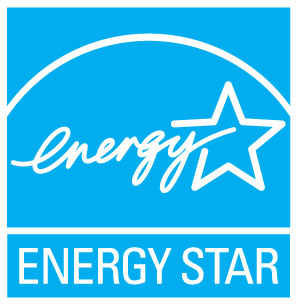What is Demand?
Demand is the amount of power needed to supply every electrical device running in your home or business at a specific point in time. It is the maximum rate at which your household or business has consumed electricity.
Demand on your bill is measured and recorded at the 15-minute interval of your highest rate of power consumption during the billing month. Your high demand value re-sets at the beginning of the next month billing cycle.
Use our bill calculator to see the affect that demand will have on your bill.




